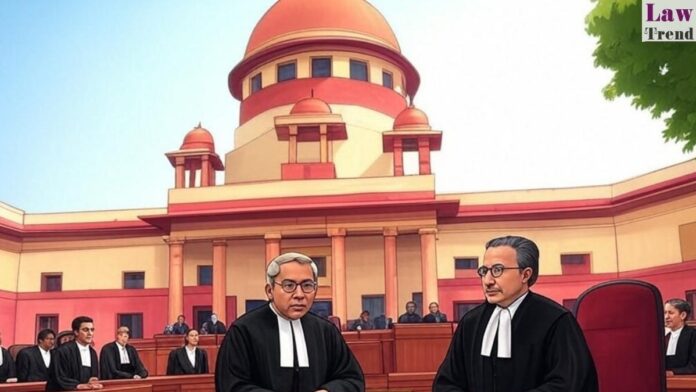The Supreme Court of India on Wednesday observed that “some kind of nationwide ‘uniformity'” in criteria is needed to determine the seniority of entry-level judicial officers, aiming to address the slow and uneven career progression faced by such judges across the country.
A five-judge Constitution bench headed by Chief Justice of India B R Gavai clarified that it does not intend to encroach upon the powers of high courts in recommending names for judgeship. The bench, also comprising justices Surya Kant, Vikram Nath, K Vinod Chandran, and Joymalya Bagchi, is considering the framing of uniform, nationwide criteria for determining seniority in the Higher Judicial Service (HJS) cadre.
Background of the Matter
The issue originated from a plea filed by the All India Judges Association (AIJA) in 1989 regarding the service conditions of judicial officers. On October 7, the apex court referred issues related to career stagnation in the lower judiciary to the five-judge bench.
On Tuesday, the bench commenced hearing on the matter, expressing concern that the slow progression was dissuading bright young lawyers from joining the service. The court noted the situation that “in most of the states, judicial officers recruited as Civil Judge (CJ) often do not reach the level of Principal District Judge (PDJ), leave aside reaching the position of a High Court Judge.”
On October 14, the bench had formally framed the primary question for consideration: “What should be the criteria for determining seniority in the cadre of Higher Judicial Services”. It also clarified that “other ancillary or related issues” could be considered.
Arguments Against Uniform Framework
During the second day of the hearing, senior advocate Rakesh Dwivedi, representing the Allahabad High Court, strongly dissuaded the top court from imposing a uniform seniority framework. He argued that the matter should be left to the discretion of the High Courts, which are “constitutionally empowered to manage the administration of the subordinate judiciary.”
“The high courts are seized with the facts and the prevailing situations within their states. They are best positioned to deal with the issue of seniority and promotions… It is the time to strengthen the high courts and not to weaken them,” Mr. Dwivedi submitted.
He contended that the data presented by the amicus curiae was “scanty, incomplete, and based on pre-existing legal positions,” and thus not reflective of ground realities. “Most high courts are not being represented… If the situation differs from state to state, any uniform quota or rule is bound to create imbalance… Let the high courts deal with their own circumstances,” he urged, adding that his plea was “based on a constitutional plank.”
Mr. Dwivedi also highlighted the variance in existing service rules, arguing that a uniform quota could “disrupt the delicate balance” between promotee and direct recruit judicial officers.
Court’s Observations and Clarifications
The bench, however, emphasized the need for consistency while respecting the High Courts’ authority. “Some uniformity has to be there amongst the high courts… we will not be taking away the discretion of high courts for recommending the names. But why should there be different policies for every high court?” the CJI remarked.
Assuring Mr. Dwivedi, the CJI stated, “We do not even indirectly or remotely intend to take away the discretionary powers of the high courts.”
Justice Surya Kant supplemented this, clarifying that the bench’s focus was on general principles, not individual disputes. “There is no question of entertaining individual seniority disputes. It’s going to be a broad, guiding framework,” Justice Kant said. The CJI added that the exercise was being undertaken as part of a “trial and error” method to improve the situation.
Submissions of Amicus Curiae
Senior advocate Sidharth Bhatnagar, assisting the court as amicus curiae, highlighted a key factor in career stagnation. He pointed out that promotions in most states were “driven more by seniority than by merit,” largely due to the evaluation methods of Annual Confidential Reports (ACRs).
“Promotee judges, being older, often retire before reaching the next promotional stage. Consequently, the top of the cadre is usually occupied by direct recruits, who are younger and hence remain eligible for longer,” Mr. Bhatnagar explained. He suggested a balanced approach, proposing that for every 30 considerations for promotion to district judge, 15 should be from promotee judges and 15 from direct recruits.
The hearing in the matter remained inconclusive and will continue.




